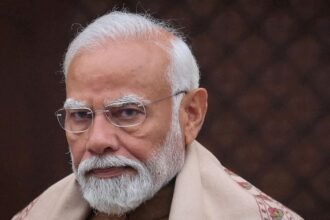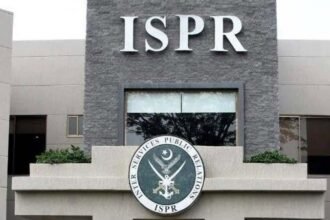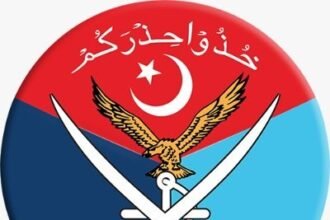Iftikhar Khattak

Alliances in international affairs can have hidden costs that surpass any short-term gains. The history of Pakistan’s U.S. backing serves as an example of how short-term strategic gains can result in long-term complications. A deeper look exposes complications that are typically hidden, even though media narratives usually emphasize the partnerships’ seeming shared advantages. Political leadership’s media projections are not always accurate; instead, they are selective narratives that obscure the long-term effects of international alliances.
After the 9/11 attacks, Pakistan joined the U.S.-led “War on Terror,” which received billions of dollars in financial and military support. Nonetheless, since military actions against terrorist organizations caused extensive migration and fostered domestic insurgencies, this partnership also contributed to internal destabilization. Over 500,000 people were displaced by Operation Rah-e-Nijat (2009) in South Waziristan, and almost a million civilians were forced to leave their homes by Operation Zarb-e-Azb (2014) in North Waziristan, both of which exacerbated humanitarian issues. In addition to weakening militant networks, these offensives sparked a violent backlash, which caused militants to turn their attention to urban areas. The 2014 Peshawar Army Public School massacre, one of Pakistan’s bloodiest terrorist assaults, claimed the lives of over 140 people, the majority of whom were children.
The 2011 U.S. raid in Abbottabad, which killed Osama bin Laden, additionally soured Pakistan’s ties with Washington in this worsening security environment. Concerns over national sovereignty were raised by the operation’s unilaterality, which heightened anti-Americanism in Pakistan’s security apparatus and general populace. Pakistan’s counterterrorism strategies were impacted by this growing mistrust, which also made the country’s internal security issues more unstable.
The U.S.-Pakistan association during this time was “nothing less than a whiplash-inducing rollercoaster ride,” as Shuja Nawaz observes in The Battle for Pakistan: A Bitter US Friendship in a Tough Neighborhood. This was a reflection of the two countries’ intense mistrust of one another, their frequent ups and downs, and their sudden policy changes. Pakistan was a vital U.S. partner in combating terrorism at times, getting financial and military support; yet, at other times, Washington doubted Islamabad’s loyalty, which resulted in tensions and diplomatic issues. Their strategic collaboration was extremely fragile and challenging to maintain due to this erratic nature.
How was American Support Framed by the Media?
The ruling elite framed the U.S. assistance announcements as evidence of economic alleviation and solid bilateral relations. At one point, the media celebrated the Kerry-Lugar-Berman Act of 2009, also known as the Enhanced Partnership with Pakistan Act, as a success for Pakistan’s economic revival since it promised $7.5 billion in non-military assistance. The details were somewhat less favourable though. There was disagreement between civilian and military institutions as a result of the aid’s stringent control of Pakistan’s military expenditures. In the United States and Pakistan in the 21st Century: Geostrategy and Geopolitics in South Asia, Syed Tahseen Raza notes that military objectives typically affect government systems and that U.S. aid frequently meets strategic objectives rather than Pakistan’s developmental requirements.
While negating its severe home effects, media narratives frequently presented Pakistan’s collaboration in fighting terrorism as an essential step towards ensuring global safety. The global media paid little attention to the approximately 3.4 million Pakistanis who were displaced as a result of military operations in Khyber Pakhtunkhwa (KP) and the erstwhile Federally Administered Tribal Areas (FATA). On the other hand, much reporting on U.S. drone attacks concentrated on taking out “high-value targets,” frequently ignoring civilian fatalities. This selective reporting created a false impression of US assistance, which ignored the human costs paid by regular Pakistanis while emphasizing strategic gains.
Past Events: The Afghan War and Beyond
Another example of how U.S. aid, presented as a significant geopolitical triumph, had long-term effects on Pakistan is the Soviet-Afghan War in the 1980s. The United States put Cold War goals ahead of regional peace by using Pakistan to transfer funds to the Afghan mujahideen. The emergence of extremist organisations that subsequently presented serious difficulties for Pakistan and the world at large was unintentionally aided by this backing. This strategy is criticized by Tariq Ali in The Duel: Pakistan on the Flight Path of American Power, who claims that American actions “helped create the very ‘terrorist’ groups that they are now fighting.”
Likewise, Pakistan was left to bear the consequences on its own following the fall of the Soviet Union during the Cold War. A surge of terrorists and weaponry entered Pakistan’s borders as a result of the abrupt U.S. withdrawal in the 1990s. This withdrawal might be linked to the emergence of extreme ideas and sectarian conflict at this time.
The Pressler Amendment and Partnership Illusion
The unstable nature of aid-dependent partnerships is further demonstrated by the Pressler Amendment’s enactment in 1990. The United States left Pakistan financially unstable by halting aid because of reservations about nuclear proliferation. Considering Pakistan’s previous collaboration during the Cold War, this move was seen as a betrayal. The sudden cut-off of funding exacerbated political instability and undermined the civilian government.
U.S.-Pakistan ties have long been transactional, with short-term strategic collaboration frequently giving way to long-term mistrust and unresolved issues. This is reflected in the way Pakistan has frequently been treated like a “rented horse,” used for strategic objectives and then left out once its short-term benefits are impacted.
The Unspoken Cost Pakistan Continues to Face
Pakistan is currently at a turning point once more. Pakistan would likely pay a hefty price in the near future, particularly in its western provinces, such as KP and Balochistan, in my opinion. Cross-border security challenges and the return of terrorist activities show that Pakistan is still coping with the fallout from its previous relationships. The actions taken to quell insurgencies in these areas are not sustainable. Rather, Pakistan needs a well-planned national security policy that places a high priority on sustained peace and public participation.
History teaches us a lot about how public opinion shapes successful security measures. The Vietnam War is among the most notable examples, where persistent popular demonstrations in the United States were crucial in bringing an end to military interventions. Similarly, Pakistan underwent a democratic transition in the late 2000s as a result of media and civil society opposition to military rule. Major policy decisions have always been impacted by the opinions of the people, and in the current environment, a public-driven approach to security strategy is essential.
The Importance of a Security Strategy Focused on the Public
Pakistan must change its national security strategy from one that is solely military-focused to one that actively takes into account popular opinion and involvement at the local level. Even if using military force alone has been inadequate and perhaps harmful, it may be required in some urgent situations. The 2009 Swat Peace Deal, also known as the Nizam-e-Adl Regulation, which attempted to use Sharia law to curb escalating militancy, is one example of a past event that serves as a sobering reminder that military actions by themselves cannot bring about enduring peace when underlying socioeconomic and political unrest remain in place. This ultimately unsuccessful effort at bringing about peace serves as a reminder that Pakistan runs the risk of descending into a never-ending cycle of violence and retaliatory military actions if the underlying reasons for conflict are not addressed.
Continuous political communication with all parties involved, locally-specific economic development projects, and a strong counter-narrative against extremism created in collaboration with civil society and community leaders are all essential components of a genuinely successful plan. Beyond a merely transactional approach to security, Pakistan may find long-term solutions based on the reality of the impacted areas by including local populations in decision-making and placing a high priority on national sovereignty.
Conclusion: Lessons from History
Pakistan’s history of forming alliances, especially with superpowers like the US, emphasises the importance of carefully considering the long-term effects of such collaborations. Foreign aid may have short-term advantages, but it frequently has unintended consequences that compromise national sovereignty and sustained development, such as internal instability and economic reliance. Furthermore, foreign aid is frequently portrayed as a success by political leaders and media narratives, which minimise its terms and long-term effects. Given this, Pakistan has to pursue a more autonomous foreign policy based on its national interests, guaranteeing economic stability and security according to its standards.
Building resilience and guaranteeing a secure and sovereign future will require including civil society and incorporating public opinion into decisions, as new security concerns in KP and Balochistan arise. Relying too much on military operations is inadequate.










